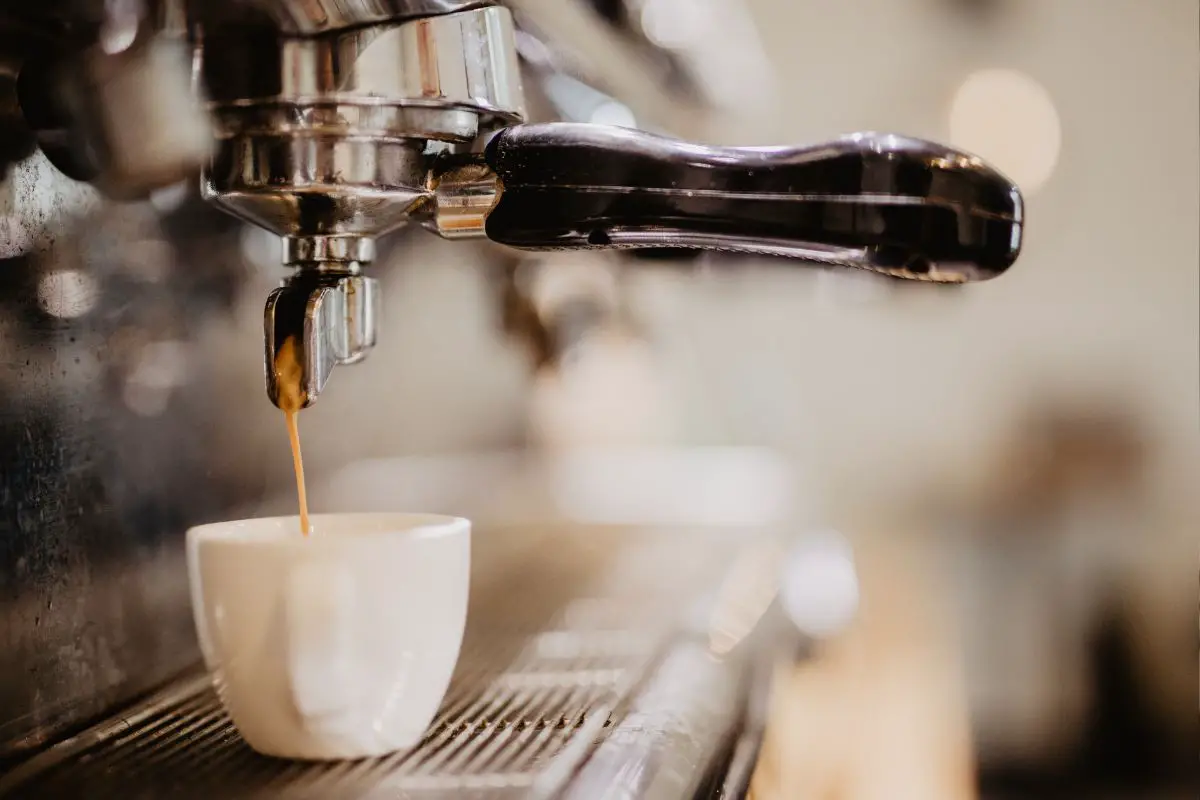Table of Contents
What Kind of Beans Should I Use for my Espresso Machine?
Are you tired of dull, bland coffee from your espresso machine? Want to elevate your espresso game and impress your taste buds? Then you’ve come to the right place. The type of beans you use in your espresso machine can greatly impact the flavor, aroma, and overall experience of your espresso. In this comprehensive guide, we will dive into the world of espresso beans and help you choose the right beans for your espresso machine.
*This post may contain affiliate links. As an Amazon Associate we earn from qualifying purchases.
I. Introduction
A. Overview of Espresso Machines
Espresso machines are a staple in any coffee lover’s kitchen. They allow you to enjoy rich, bold, and creamy espresso shots in the comfort of your own home. Whether you prefer a single or double shot, espresso machines provide a convenient way to enjoy your favorite coffee drinks.
B. Importance of Choosing the Right Beans
While espresso machines are crucial for brewing a great espresso shot, the type of beans you use is equally as important. The flavor, aroma, and overall quality of your espresso is greatly impacted by the type of beans you choose.
C. Purpose of the Blog Post
The purpose of this blog post is to provide you with all the information you need to choose the right beans for your espresso machine. We will discuss the different types of espresso beans, the impact of freshness, roast level, and origin, and provide tips on how to grind your beans for the best espresso experience.
II. Understanding Espresso Beans
A. Definition of Espresso Beans
Espresso beans are specially roasted coffee beans designed for use in espresso machines. They are typically a blend of Arabica and Robusta beans, and are roasted to a medium to dark roast. The roasting process brings out the natural sweetness, complexity, and depth of the beans, making them ideal for espresso.
B. Characteristics of Espresso Beans
Espresso beans are characterized by their bold, rich, and complex flavor profile. They are also known for their creamy and smooth texture, making them the perfect base for lattes, cappuccinos, and other espresso-based drinks.
C. Types of Espresso Beans
There are two main types of espresso beans: Arabica and Robusta. In addition, many coffee roasters offer blends of these two beans for a unique flavor profile. Let’s take a closer look at each type.
III. Arabica Beans
A. Description of Arabica Beans
Arabica beans are a type of coffee bean that is widely regarded as the finest and most desirable type of coffee bean in the world. They are grown at high elevations in regions with mild climates and are known for their sweet, fruity, and floral flavor profile.
B. Flavor Profile of Arabica Beans
Arabica beans are characterized by their sweet, fruity, and floral flavor profile. They have a smooth and delicate taste, with hints of cherry, chocolate, and caramel. They are also known for their low acidity, making them a great choice for those who are sensitive to acidic coffee.
C. Pros and Cons of Using Arabica Beans
Pros:
- Sweet and fruity flavor profile
- Low acidity
- Smooth and delicate taste
Cons:
- Can be more expensive than Robusta beans
- More delicate and sensitive to environmental factors, making it more difficult to grow
- Can have a more inconsistent flavor profile
IV. Robusta Beans
A. Description of Robusta Beans
Robusta beans are a type of coffee bean that are grown at lower elevations and are known for their bold and bitter flavor profile. They contain more caffeine than Arabica beans and are often used in espresso blends to add depth and bitterness to the flavor profile.
B. Flavor Profile of Robusta Beans
Robusta beans are characterized by their bold and bitter flavor profile. They have a nutty, earthy taste, with hints of chocolate and caramel. They also have a higher acidity than Arabica beans, making them a great choice for those who prefer a bolder, more robust flavor profile.
C. Pros and Cons of Using Robusta Beans
Pros:
- Bold and bitter flavor profile
- Higher caffeine content
- Good source of depth and bitterness in espresso blends
Cons:
- Higher acidity than Arabica beans
- More bitter taste that may not be preferred by all coffee drinkers
- Can be less complex and flavorful than Arabica beans
V. Blended Beans
A. Description of Blended Beans
Blended beans are a combination of Arabica and Robusta beans that are blended together to create a unique flavor profile. Blending allows coffee roasters to combine the best qualities of both beans, resulting in a well-rounded and balanced espresso shot.
B. Flavor Profile of Blended Beans
Blended beans are characterized by their well-rounded and balanced flavor profile. The blend of Arabica and Robusta beans creates a smooth, creamy texture, with a bold and complex flavor.
C. Pros and Cons of Using Blended Beans
Pros:
- Well-rounded and balanced flavor profile
- Smooth, creamy texture
- Combines the best qualities of Arabica and Robusta beans
Cons:
- Can be more expensive than using single origin beans
- Blending can result in a more inconsistent flavor profile
- Quality of blended beans can vary greatly depending on the roaster
VI. Freshness of Beans
A. The Importance of Fresh Beans
The freshness of the beans you use in your espresso machine is crucial for achieving a great espresso shot. Fresh coffee beans have a higher level of natural oils and flavors, which can greatly impact the taste and aroma of your espresso.
B. How to Determine Freshness
There are several ways to determine the freshness of your coffee beans. The most common way is to look at the roast date, which is usually printed on the bag. You can also look for signs of staleness, such as a dull flavor or a flat aroma.
C. Pros and Cons of Using Fresh Beans
Pros:
- Higher level of natural oils and flavors
- Improved taste and aroma of espresso shot
- Enhanced overall espresso experience
Cons:
- Beans can go stale quickly if not stored properly
- Can be more expensive to purchase fresh beans regularly
VII. Roast Level
A. Overview of Roast Levels
The roast level of your coffee beans can greatly impact the flavor and aroma of your espresso shot. There are three main roast levels: light, medium, and dark.
B. Characteristics of Light Roast
Light roast coffee beans are lightly roasted, resulting in a mild and delicate flavor profile. They have a bright and acidic taste, with a high level of natural coffee flavors and aromas.
C. Characteristics of Medium Roast
Medium roast coffee beans are roasted for a slightly longer period of time, resulting in a smooth and balanced flavor profile. They have a moderate acidity and a rich and nutty taste, with hints of caramel and chocolate.
D. Characteristics of Dark Roast
Dark roast coffee beans are roasted for the longest period of time, resulting in a bold and intense flavor profile. They have a low acidity and a smoky, bitter taste, with notes of dark chocolate and caramel.
E. Pros and Cons of Different Roast Levels
Pros of Light Roast:
- High level of natural coffee flavors and aromas
- Bright and acidic taste
Pros of Medium Roast:
- Smooth and balanced flavor profile
- Moderate acidity and rich, nutty taste
Pros of Dark Roast:
- Bold and intense flavor profile
- Low acidity and smoky, bitter taste
Cons of Light Roast:
- Mild flavor profile may not be preferred by all coffee drinkers
- Can be less intense than darker roasts
Cons of Medium Roast:
- Can be more expensive than light or dark roasts
- Flavor profile may not be preferred by all coffee drinkers
Cons of Dark Roast:
- Bold and bitter flavor profile may not be preferred by all coffee drinkers
- Can overpower the flavors of the espresso shot
VIII. Grinding Beans
A. Overview of Grinding Beans
Grinding your coffee beans is an essential step in making a great espresso shot. The grind size can greatly impact the flavor and aroma of your espresso, so it is important to choose the right grind size for your espresso machine.
B. Characteristics of Fine Grind
A fine grind is characterized by its small and powdery texture. Fine grinds are typically used for espresso shots, as they extract the maximum amount of flavor from the beans.
C. Characteristics of Coarse Grind
A coarse grind is characterized by its larger, chunky texture. Coarse grinds are typically used for coffee makers that use a paper filter, as they prevent the grinds from seeping into the coffee.
D. Pros and Cons of Different Grind Sizes
Pros of Fine Grind:
- Extracts the maximum amount of flavor from the beans
- Ideal for making espresso shots
Pros of Coarse Grind:
- Prevents grinds from seeping into coffee
- Ideal for coffee makers that use a paper filter
Cons of Fine Grind:
- Can result in a bitter or over-extracted espresso shot if the grind size is not right
- Can clog espresso machine if grind size is too fine
Cons of Coarse Grind:
- Can result in a weak or under-extracted espresso shot if the grind size is not right
- Not ideal for making espresso shots
IX. Water Quality
A. Overview of Water Quality
The water quality you use in your espresso machine can greatly impact the taste and aroma of your espresso shot. It is important to use high-quality water that is free of impurities and minerals that can affect the taste of your espresso.
B. Characteristics of High-Quality Water
High-quality water is characterized by its pure and clean taste. It is free of impurities and minerals that can affect the taste of your espresso, such as chlorine, sulfur, and calcium.
C.Characteristics of Low-Quality Water
Low-quality water is characterized by its impure and contaminated taste. It may contain impurities and minerals that can affect the taste of your espresso, such as chlorine, sulfur, and calcium.
D. Pros and Cons of High-Quality and Low-Quality Water
Pros of High-Quality Water:
- Enhances the taste and aroma of your espresso shot
- Free of impurities and minerals that can affect the taste of your espresso
Pros of Low-Quality Water:
- Convenient and readily available
- Inexpensive
Cons of High-Quality Water:
- May be more expensive than low-quality water
- Can be more difficult to find
Cons of Low-Quality Water:
- Can affect the taste and aroma of your espresso shot
- Can clog and damage your espresso machine
X. Conclusion
So there you have it, folks! Now that you know the different factors that can impact the flavor and aroma of your espresso shot, you can choose the right kind of beans, roast level, grind size, and water quality for your espresso machine. With the right combination of these elements, you can create the perfect espresso shot every time! Just remember, it’s all about the beans, baby! So go ahead, choose wisely and enjoy that delicious, creamy espresso shot!

